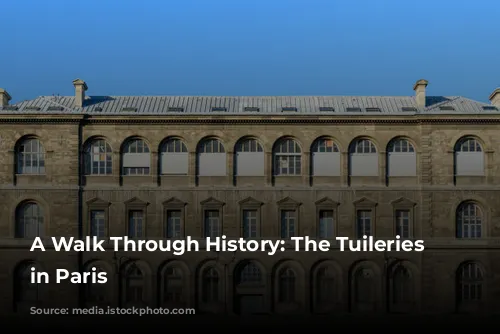Imagine a green oasis in the heart of Paris, a place where history whispers through the trees and the Seine River gently flows. This is the Tuileries Garden, a sprawling park that has witnessed centuries of change, from royal splendor to revolutionary upheaval.
A Royal Beginning
The Tuileries Garden traces its origins back to the 16th century, when Catherine de Medici, the ambitious widow of King Henry II, desired a magnificent palace to rival the grandeur of the Louvre. The chosen location was a site of tile factories, which gave the future palace its name – “Tuileries” in French.
She envisioned a grand Italianate palace that would stretch along the Seine, complete with breathtaking gardens. Construction commenced in 1564, and though the palace project faltered, the gardens flourished under the skilled hands of Bernard de Carnessequi, a talented Italian gardener. His vision of a spectacular Italian-style garden, adorned with intricate follies and enclosed by high walls, became a favorite retreat for the Parisian elite.

A Royal Residence and a Public Paradise
King Henry IV later united the Tuileries palace with the Louvre, creating a vast royal precinct. Claude Mollet, a renowned landscape architect, further enhanced the garden with trees, flowerbeds, fountains, and a magnificent ornamental pool. Even when the royal family was absent from Paris, the garden remained open to the public, offering a glimpse into the royal lifestyle.
The garden continued to evolve through the reigns of Louis XIII and Louis XIV, becoming a symbol of French power and beauty. However, after Louis XIV moved his court to Versailles, the Tuileries Palace and its gardens were neglected for nearly half a century.
A Garden Through the Ages
The French Revolution brought dramatic changes to the Tuileries. The royal family was forced to return, making the palace the center of political turmoil. The Louvre Palace, meanwhile, was transformed into a national museum. Napoleon Bonaparte later resided in the Tuileries Palace, adding his own imprint to the historical landscape.
Tragically, the palace was destroyed by fire during the Paris Commune in 1870, leaving only the gardens as a testament to the palace’s past. Despite this loss, the Tuileries Garden has remained a beloved public space, a green lung in the heart of Paris.
A Journey Through Time
Today, the Tuileries Garden is a treasure trove of history and art. From the Cour Napoleon with its iconic glass pyramid to the Carrousel Gardens and the Grand Carré, each corner tells a story. The garden has been lovingly restored, showcasing the elegance of French garden design, with statues, fountains, and charming terraces.
As you stroll through the Tuileries Garden, you’ll feel the echoes of the past, from the grandeur of the French monarchy to the turmoil of the revolution, the beauty of the garden remains a timeless reminder of the resilience of human spirit.
Plan Your Visit
The Tuileries Garden is open to the public daily, offering a peaceful retreat from the bustling city. You can enjoy a leisurely walk, a picnic lunch, or even a guided tour. Immerse yourself in the history and art of this magnificent garden, and discover a Parisian treasure that has stood the test of time.
